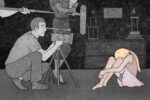Disney Animation’s newest film, “Raya and the Last Dragon,” was released in early March and is currently available to stream through Disney+. The film was inspired by the diverse countries of Southeast Asia and suggests a step forward in terms of diversity in the Disney canon. Raya, the main character, is the first Southeast Asian Disney princess, and many people worldwide are happy to see another main character of color in the Disney princess lineup.
However, the film’s release has not been without flaws. Disney’s release of “Raya and the Last Dragon” is symbolic of the industry’s ever-growing need to reflect more cultures through diverse, and well-researched, characters.
In addition to its attempt at Southeast Asian representation, this film marks several other adjustments for the animation studio’s operations and prompts the question of how Disney will approach its future feature films.
Stunning Animation Created at Home
One of the biggest, yet subtle, differences between this film and previous Disney Animation features is perhaps the fact that “Raya and the Last Dragon” is the studio’s first film made almost entirely from home. Production began in early March of 2020, but due to the COVID-19 pandemic, most of the film had to be completed elsewhere.
When asked about the transition from the studio to a home environment, co-director and animator Paul Briggs recounted the moment the studio was asked to go home. “I still remember the day where everybody is like, ‘We’re going home, we’re going to start building this thing from home,’” Briggs said. “And the animators were kind of walking out with their computers. Technology was scanning everything, making sure, ‘Okay, we’re going to need this.’”
According to co-director Carlos López Estrada, the voice actors had to record all of their lines from home as well, often from closets or make-shift living room tents. Disney Animation’s technology department sent microphones and recording equipment to the actors, located around the world. Kelly Marie Tran, who voices Raya, recorded from her house in the United States, and Awkwafina, who voices the dragon Sisu, was stationed in Australia while filming an upcoming Marvel film titled “Shang-Chi and the Legend of the Ten Rings.”
Despite these setbacks, the film’s animation is just as breathtaking as other recent Disney films. Since it does not seem like a homemade film by any means, it seems possible that Disney could continue to explore work-from-home opportunities in their future projects. Pixar has already started production on their upcoming film “Luca” during the pandemic.
A Step Forward for Women
Significantly, “Raya and the Last Dragon” is only the second Disney princess film to omit any direct romance for the main character. Rather than give Raya a romantic interest, the film allows her to grow as a person and learn from her past mistakes related to the film’s many plot points, without having romance get in the way.
Although Pixar’s “Brave” also did not give Merida a love interest, the film still included a side-plot involving her duty as a princess to get married; Disney’s “Moana” was the first Disney Princess film to completely forgo the idea of a romantic interest for the female lead. With the number of main characters in “Raya and the Last Dragon,” there certainly could have been an opportunity to add a love interest. Instead, the film deliberately excludes any kind of romance and lets Raya shine on her own, allowing for more screen time with the other characters. Clearly, Disney seems to be slowly moving away from the “princess and her knight and shining armor” concept that the studio used to be known for.
Also worth noting, “Raya and the Last Dragon” includes several strong female characters, particularly Raya and her adversary, Namaari. Both women are the highlight of several riveting fight scenes in the film, and are even shown using fighting techniques inspired by silat, a traditional martial arts practice in Malaysia and Indonesia. Raya is made to feel like a highly capable and clever character, which is contrary to some of the Disney princesses from the studio’s first films nearly 100 years ago.
Since the release of “Aladdin” in 1992, there have been five Disney princesses of color, and with every new princess of color comes an increasingly diverse cast and production. Several of the people included in the making of “Raya and the Last Dragon” were indeed Southeast Asian, including writers Adele Lim and Qui Nguyen, and actress Kelly Marie Tran. Additionally, most of the other cast members are of Asian descent.
Representation: A Long Way to Go
Although the film’s story is inspired by several Southeast Asian cultures, this “representation” has caused a divide between Southeast Asians. Although Raya is the first Southeast Asian Disney princess, Kelly Marie Tran is one of the only Southeast Asian voices in the cast. Additionally, the film is only available on Disney+ in many regions of the world, but most countries in Southeast Asia do not have access to the streaming service, so the film remains inaccessible to one of its major target audiences.
Some Southeast Asians believe the representation of their cultures through the storytelling and beautiful animation was done well, while many others feel as though Disney did little to represent any particular Southeast Asian culture. To Kirby Aráullo, the film falls somewhere in the middle. “I’m really glad we have something like this in the mainstream, for our youth,” Aráullo said in his review of the film. Aráullo is a Filipino historian who has been working closely with Southeast Asian youth for over 15 years and currently serves as the National Coordinator for Culture and Heritage of the National Alliance for Filipino Concerns. “Although it’s not 100% accurate, then again, it’s a fantasy world. It would be a very difficult task to reflect a real Southeast Asian experience, as there is [no singular way] to represent all of the countries.” He later stated, “During this time of anti-Asian hate in the United States, it’s still important to see ourselves front and center of the mainstream pop culture.”
While the film has caused people to question Disney’s attempt at representation, the diversity in the film is still significant, especially for kids who want to understand or feel seen in today’s media. Children who may grow up seeing this film on their screens, whether or not they are Southeast Asian, can find great value in seeing a wider range of diverse characters. “It’s really priceless for our children to have something like this, to see various skin tones similar to [their] own [as an] affirmation of identity. It can be empowering for children, and many marginalized communities,” he continued. “Representation is still disproportionate [in our media], and this movie is far from a perfect representation of Southeast Asian cultures, but it can remind us of the importance of appreciating other cultures.”
Throughout the past couple of decades, Disney has made only a handful of films representing non-Western cultures. “Raya and the Last Dragon” seems to not only pave the way for other cultures to be depicted in American mainstream media, but also highlight the necessity for careful cultural research and thoughtful casting when making such a monumental film to represent a minority group.
A Better Path for Diversity
Overall, “Raya and the Last Dragon” is a step in the right direction when it comes to the representation and diversity the world should experience through film. Coming from a major animation company that did not highlight main characters of color until the 1990s, Disney Animation Studios has certainly come a long way.
Though there are many flaws in the film’s representation, and Disney could have put more effort into the film as a whole, the company is evidently inching toward a future open to diversity, fierce female figures and overcoming the challenges of working from home.

















